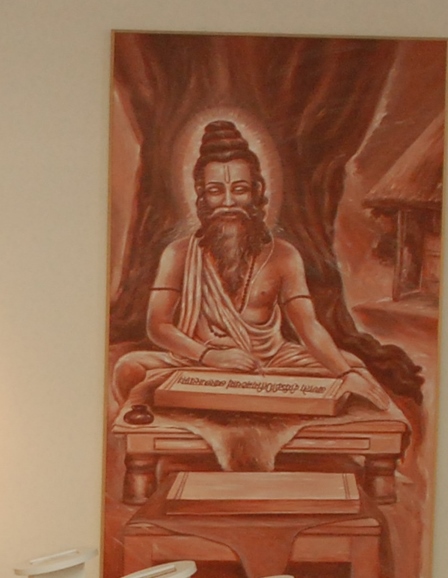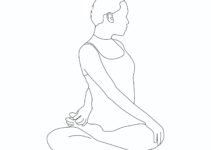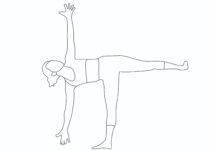Traditional Schools of Yoga Overview
The different traditions and lineages of Yoga have led to the emergence of various types of traditional yoga schools. These yoga schools include Jnana Yoga, Bhakti Yoga, Karma Yoga, Patanjali Yoga, Hatha Yoga, Buddha Yoga, Jain Yoga, Kundalini Yoga, Mantra Yoga, etc. Each school has its approach and practices that lead to the ultimate aim and objectives of Yoga.

Know more about Jnana Yoga
Jnana Yoga is the pathway of intellect, knowledge and wisdom. Jnana Yoga says avidya (ignorance) is the most important cause of suffering and diseases. The main attributes of this school are featureless Brahman, Jnana as the means of realisation, and liberation (moksha) through completion. Intuitive knowledge emerges from the deepest cores of personality. Viveka of Jnana Yoga differentiates the real from the unreal, and Vairagya, non-attachment, is a craving-free state of mind. “Brahma Sutras” is the leading classical text on jnana yoga.
Top facts about Bhakti Yoga?
Bhakti Yoga is the path of devotion to enlightenment. Bhakti means unconditional and selfless love and affection towards God. Bhakti Yoga synchronises the mind towards unconditional and selfless divine love. The main attributes of Bhakti Yoga are asanugraha (divine grace), dualism (the distinction between ‘self’ and God), and complete surrender to God (Ishawarpranidhana).
As per Bhagavata Purana, the various forms of devotion are:
- Shravana (listening to the scriptural stories of a personal deity)
- Kirtana(singing devotional songs)
- Smarana (constantly remembering the Divine)
- Pada-seven (rendering selfless karma with devotion)
- Archana (worshipping an image)
- Vandana (paying homage to one’s chosen deity)
- Dasya(unquestioning’ devotion to the deity)
- Sakhya(relationship between the Divine and the devotee)
- Atma-nirvana (complete surrender of the self to the deity).
What is Karma Yoga?
Karma Yoga is the way of doing an action. It is based on the principle of nishkama karma (action devoid of selflessness); the right attitude and duties lead to joy and happiness. Karma Yoga emphasises performing karma with a sense of responsibility without any expectations in return. It revolves around the following attributes: skillfulness in action (karmasukaushlam) and selfless acts (nishkama karma).
Know all about Raja Yoga
Raja Yoga or Patanjali Yoga is the path of controlling the mental activities/modifications (chitta-vritti-nirodha) to attain kaivalya. Raja Yoga considers that life is entirely of suffering caused by mental modifications, which can be controlled through mental changes. Patanjala Yoga emphasises Kriya Yoga and Ashtanga Yoga. Ashtanga Yoga comprises Yama, Niyama, Asana, Pranayama, Pratyahara, Dharana, Dhyana, and Samadhi.
What is Hatha Yoga in Brief?
In Hatha Yoga, Hatha is a combination of two syllables, ha and tha. Ha represents the mind or mental energy, while the represents vital energy (prana). Thus, Hatha Yoga means union (Yoga) of the mental and pranic energy. It begins with the body, creates a harmonious balance between the prana and mind, and leads to samadhi (self-realisation) and moksha (the blissful and unbroken peace). Some authoritative texts on Hath Yoga are ‘Hatha Yoga Pradipika’, ‘Gheranda Samhita’, ‘Shiva Samhita’, and ‘Hatha Ratnavali’.
What is Jain Yoga?
Jain Yoga is the oldest school. Jainism firmly upholds the individualistic nature of the soul and personal responsibility for one’s decisions. It believes in separate identities of body and soul. It does not believe in the existence of a supreme divine as creator, owner, preserver or destroyer of the universe. Jain Yoga propounded the famous five mahavrata (great vows) viz. Good faith (samyakadarshana), proper knowledge (samyaka jnana), right conduct (samyakacharita), Kayotsarga(a form of meditation), and Preksha meditation constitute the path to attain liberation in Jain Yoga.
Know everything about Buddha Yoga.
Buddha Yoga revolves around the very philosophy of Buddha. It taught the famous ‘Four Noble Truths’ and ‘Eight-fold Path’. The Four Noble Truths include the truth of suffering, the reality of the cause of suffering, the truth of the end of suffering, and the truth of the path leading to the end of suffering. At the same time, the Eightfold Path of Buddha Yoga is right view, resolve, speech, conduct, livelihood, effort, mindfulness, and Samadhi.
What is Kundalini Yoga?
Kundalini Shakti lies dormant in the Muladhara Chakra; when awakened, the energy goes upwards, passes through Sushumna Nadi, activates chakras such as Muladhara Chakra, Swadhishthana Chakra, Manipur Chakra, Anahata Chakra, Vishuddhi Chakra, Ajna Chakra, and Sahasrara Chakra. All these Chakras are essential as the energy flows through the chakras into the human body.
What is Mantra Yoga?
Mantra Yoga or Japa Yoga uses mantras to awaken the Self. Mantra’s repetition aids in the concentration of the mind during meditation as it engages the mind with sound, its duration, and the number of repetitions. Mantra Yoga helps to neutralise agitation (rajas) and inertia (tamas), allowing the practitioner to move into a pure state of consciousness. Mantras can be practised in three ways: Bukhari (chanting loudly), upanshu (chanting in a low voice), and manasjapa (chanting silently to oneself).





